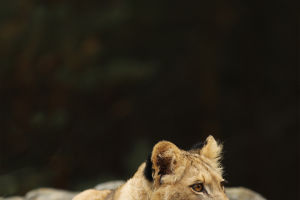The body length of the cougar is 130-200 cm, the tail length is about 100 cm, the shoulder height is 55-80 cm, and the weight is 35-100 kg. It is the largest in the cat subfamily. Males are nearly twice the size of females. The cougar has a uniform body and medium-length limbs. It often inhabits various environments except tropical rain forests, is good at climbing and jumping, and can be active all day.
In terms of geographical distribution, cougars mainly live in the Americas, and their distribution ranges from the Andes Mountains in South America to Canada in North America. Cougars are highly adaptable to the environment, whether it is cliffs, canyons, forests, lowlands, or even desert areas with more mountains, you can see the trail of cougars. The cougar is an animal that likes to live in a secluded, peaceful environment.
Cougars generally run at a speed of 60-80 km/h. Running requires a lot of energy, so they do not hunt for prey over long distances. They secretly follow their prey or ambush in advance until they have a chance to pounce on the prey. , and then deliver a fatal blow to the back of the prey's neck.
Although cougars are very aggressive when they hunt, they are actually quite docile compared to other predatory animals. Under normal circumstances, it will not actively attack humans. When humans meet a cougar, as long as they open their arms and make noises, they can basically scare it away.
Cougars, like all animals in the feline subfamily, cannot make the roaring noises of big cats. Cougars are carnivores with longer and more muscular hind legs than their front legs, which gives them good jumping abilities, up to 5 meters vertically and 9-12 meters horizontally. Cougars are solitary animals, and they usually avoid their fellows except when they are courting and mating. Cougars are good swimmers, but they don't like being wet, so they don't get into the water very often.
Cougars are nocturnal carnivores and are mainly active in the dark between dusk and dawn. Their main prey is ungulates, especially deer. They also hunt small prey, and sheep, goats and calves are occasional food sources. They also have the ability to hunt large prey such as red deer, moose, and llamas.
Historically,cougars have a wide range, but they have all but become extinct in eastern North America in the last two centuries. According to the data given by the International Union for Conservation of Nature, the population of cougars in the world is less than 50,000, and the number is showing a great downward trend.
The significance of protecting cougar is self-evident. Cougar plays a very important role in the ecological environment. It inhibits the growth of many species of herbivores and presents a strong state of competition with local gray wolves. Once the cougar population is greatly reduced, this ecological balance will be out of balance, which may lead to the collapse of the local ecosystem.
Protecting the environment is the most effective and fundamental way to protect species. Because no matter what animal it is, its habitat is destroyed, so it cannot survive; and if the habitat environment is restored, its population will naturally grow. Many countries in the world have verified this.


